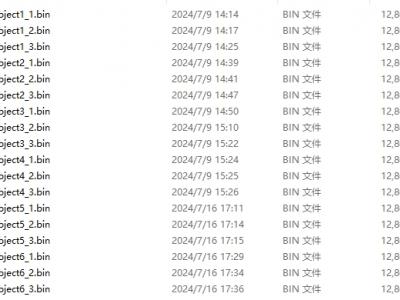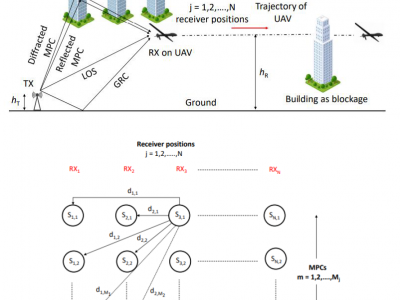mmWave
A total of 6 subjects participated in the experiment with each for three times test.We activated antennas for transmitting Tx0 and for receiving Rx1-4 to obtain the raw-data during experiment. Meanwhile, DCA1000EVM is transferring the raw-data to PC. According to parameters that had been set, each raw-data is 12,800 KB to be utilized.
- Categories:
 194 Views
194 ViewsThe increasing availability of multimodal data holds many promises for developments in millimeter-wave (mmWave) multiple-antenna systems by harnessing the potential for enhanced situational awareness. Specifically, inclusion of non-RF modalities to complement RF-only data in communications-related decisions like beam selection may speed up decision making in situations where an exhaustive search, spanning all candidate options, is required by the standard. However, to accelerate research in this topic, there is a need to collect real-world datasets in a principled manner.
- Categories:
 448 Views
448 ViewsFuture mobile communication systems include millimeter wave (mmWave) frequency bands and high mobility scenarios. To learn how wave propagation and scattering effects change from classical sub 6 GHz to mmWave frequencies, measurements in both bands have to be conducted. We perform wireless channel measurements at 2.55 GHz and 25.5 GHz center frequency at velocites of 40 km/h and 100 km/h. To ensure a fair comparison between these two frequency bands, we perform repeatable measurements in a controlled environment.
- Categories:
 736 Views
736 Views5G-NR is beginning to be widely deployed in the mmWave frequencies in urban areas in the US and around the world. Due to the directional nature of mmWave signal propagation, improving performance of such deployments heavily relies on beam management and deployment configurations.
- Categories:
 808 Views
808 ViewsGround-to-air (GA) communication using unmanned aerial vehicles (UAVs) has gained popularity in recent years and is expected to be part of 5G networks and beyond. However, the GA links are susceptible to frequent blockages at millimeter wave (mmWave) frequencies. During a link blockage, the channel information cannot be obtained reliably. In this work, we provide a novel method of channel prediction during the GA link blockage at 28 GHz.
- Categories:
 472 Views
472 ViewsThe measurement dataset consists of reflected received power from different shaped and sized metallic reflectors at 28 GHz in the indoor corridor and outdoor open area. PXI channel sounder from National Instruments was used for measurements. Horn antennas of gain 17 dBi were used at the transmitter and receiver. The measurements consisted of three flat square metallic reflectors of sizes 0.84 × 0.84 m^2 , 0.61 × 0.61 m^2 , and 0.3 × 0.3 m^2 , a sphere, and a cylinder. The effect of size and shape of the reflectors on the coverage was analyzed in the indoor corridor and outdoor open area.
- Categories:
 350 Views
350 ViewsThe dataset consists of training and test data and label matrices for single-pixel compressive DoA estimation for mmWave metasurface. The dataset will be uploaded soon. Currently, a small part of the dataset can be accessed through this repository. For detailed information, please visit Graph Attention Network Based Single-Pixel Compressive Direction of Arrival Estimation through https://arxiv.org/abs/2109.05466
- Categories:
 750 Views
750 ViewsThis is a CSI dataset towards 5G NR high-precision positioning,
which is fine-grained, general-purpose and 3GPP R18 standards complied.
The corresponding paper is published here (https://doi.org/10.1109/jsac.2022.3157397).
5G NR is normally considered to as a new paradigm change in integrated sensing and communication (ISAC).
- Categories:
 6958 Views
6958 Views
This dataset of 7200 channels is generated at different locations in the room area of 30x15x4 m3, where the locations are separated by 0.25m in both horizontal and vertical directions. Each AP uses 10 dBm TX power and 2D BF. In the concurrent mmWave BT scenario, all APs are operating, while in the single mmWave BT scenario, we consider a single AP fixed on the center of the room’s ceiling
- Categories:
 844 Views
844 ViewsThe emerging 5G services offer numerous new opportunities for networked applications. In this study, we seek to answer two key questions: i) is the throughput of mmWave 5G predictable, and ii) can we build "good" machine learning models for 5G throughput prediction? To this end, we conduct a measurement study of commercial mmWave 5G services in a major U.S. city, focusing on the throughput as perceived by applications running on user equipment (UE).
- Categories:
 2212 Views
2212 Views





